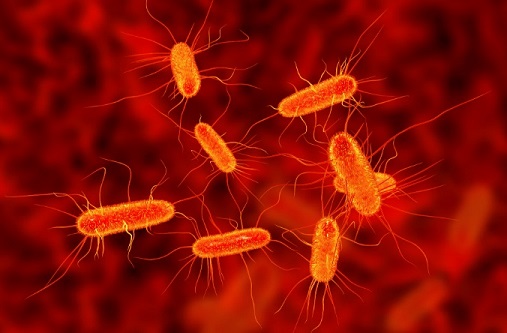BREAKING! Novel Multidrug Resistant Bacteria Found in Brazil Could Threaten Global Public Health!
Nikhil Prasad Fact checked by:Thailand Medical News Team Apr 14, 2025 1 day, 17 hours, 45 minutes ago
Medical News: Scientists Discover Dangerous Bacterial Subspecies Resistant to Multiple Antibiotics in Stored Drinking Water
In a startling discovery that could reshape how we view household water safety, a team of Brazilian and Nigerian scientists has identified a new subspecies of bacteria living in domestic drinking water tanks that is not only highly resistant to multiple antibiotics but also potentially dangerous to human health.
 Novel Multidrug Resistant Bacteria Found in Brazil Could Threaten Global Public Health
Novel Multidrug Resistant Bacteria Found in Brazil Could Threaten Global Public Health
Researchers from the Department of Biology at Rio de Janeiro State University-Brazil, the Federal University in Nigeria, the Oswaldo Cruz Foundation, the National Institute of Metrology, and the Department of Pharmacy and Biochemistry at Rio de Janeiro State University worked together to isolate and study this newly named bacterium, Aeromonas caviae subsp. aquatica subsp. nov.
The bacterium was found in the plastic water storage containers—commonly called caixas d’água—used in many Brazilian homes to store chlorinated municipal water. Although the water is treated at the source, these storage systems often remain uncleaned for months, providing an ideal breeding ground for microbial contaminants. According to this
Medical News report, the newly discovered bacterial strain is capable of forming biofilms and resisting chlorine treatment, making it both difficult to detect and hard to kill.
Why This Discovery Matters
Aeromonas bacteria are not new. They're often found in aquatic environments and are known to cause diseases in both fish and humans. However, this particular strain is different. The researchers found that it carries eight distinct antibiotic resistance genes, including those that make it immune to powerful drugs like beta-lactams, macrolides, and quinolones. Among these were genes such as blaMOX-6, blaOXA-427, and mutations in parC, all of which contribute to its robust resistance profile.
Additionally, the bacterium contains over 100 virulence-related genes that help it stick to surfaces, invade cells, produce toxins, and adapt to environmental stress. This makes the strain not only resistant but also more capable of causing infections in humans—especially those with weakened immune systems such as the elderly, young children, or people with chronic illnesses.
Key Findings from the Genome
The genome of the new strain—named V15T—was found to be approximately 4.44 million base pairs long and consists of over 4,000 genes. Unlike many other bacteria that carry resistance genes on mobile DNA elements like plasmids, this strain had its resistance genes built right into its chromosome. This means the resistance is more stable and could be passed down through generations of bacteria without relying on external factors.
Interestingly, the genome also revealed a high degree of metabolic flexibility. It can digest a variety of sugars and produce substances that allow it to thrive in low-nutrient environments like
stored water. The presence of branched-chain fatty acids and special membrane lipids further enhances its survival in harsh conditions.
A Global Health Risk in the Making
Perhaps the most concerning aspect of this discovery is the implication for public health. Most homes in Brazil and many parts of the world rely on stored water due to irregular municipal supplies. These water tanks often go unchecked for long periods, becoming breeding grounds for bacteria like Aeromonas caviae subsp. aquatica.
The presence of such a pathogen in household drinking water means that people could unknowingly expose themselves to antibiotic-resistant bacteria simply by drinking water, brushing their teeth, or washing food. This is particularly alarming in areas without strong healthcare infrastructure to deal with resistant infections.
Call for Action
The researchers emphasize the urgent need for public awareness campaigns focused on water tank hygiene and better monitoring of household water systems. They suggest that routine testing for such pathogens and the development of better water treatment methods that target biofilms and resistant bacteria are crucial next steps.
Moreover, health authorities must consider updating water safety regulations to include genomic surveillance techniques. Traditional bacterial detection methods may not be enough to spot emerging strains that pose silent but serious threats.
Conclusion
The emergence of Aeromonas caviae subsp. aquatica reveals a silent but growing danger lurking within our homes. Its multidrug resistance, environmental resilience, and strong virulence factors make it a formidable threat to public health. As this study demonstrates, the danger isn’t only from untreated or contaminated water sources, but from what happens after the water leaves the treatment plant and enters domestic storage systems. This discovery should serve as a wake-up call for governments, health authorities, and the general public to take water safety more seriously—especially as global temperatures rise and antibiotic resistance continues to spread.
The study findings were published in the peer reviewed journal: Microorganisms.
https://www.mdpi.com/2076-2607/13/4/897
For the latest on Multidrug Resistant Bacteria, keep on logging to Thailand
Medical News.
Read Also:
https://www.thailandmedical.news/news/new-genotype-of-scrub-typhus-identified-in-southeastern-india
https://www.thailandmedical.news/news/breaking-u-s-medical-news-new-worrisome-strain-of-drug-resistant-gonorrhea-found-in-massachusetts,-united-states
https://www.thailandmedical.news/news/breaking-new-h1n1-flu-strains-that-emerged-in-late-2024-and-early-2025-trigger-diagnostic-failures-in-testing-kits
https://www.thailandmedical.news/pages/thailand_doctors_listings
https://www.thailandmedical.news/articles/hospital-news
